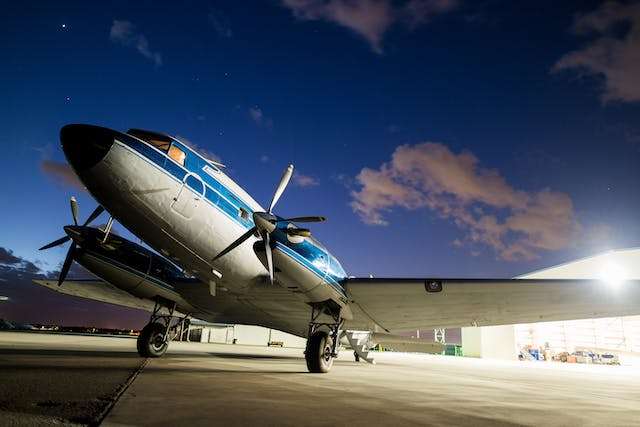In the aviation industry, making sure every flight is safe is crucial. Before an aircraft takes to the skies, a comprehensive safety checklist is meticulously followed to mitigate risks and ensure a secure journey. Let’s delve into the crucial checkpoints that aircraft go through before every takeoff. This systematic and thorough safety protocol, encompassing everything from technical assessments to crew readiness, reflects the industry’s unwavering commitment to passenger safety and serves as a foundation for the reliability and trust that define air travel.
1. Tire Inspection:
The meticulous inspection of aircraft tires stands as a cornerstone in aviation safety protocols, with Michelin Aircraft Tires taking a lead role in this pivotal process. This comprehensive examination extends beyond a cursory glance, delving into the intricacies of tire pressure, tread wear, and overall condition. The commitment to excellence in tire quality aligns with Michelin’s reputation, ensuring that every aircraft is equipped with reliable and high-performance tires. This attention to detail is paramount, as the condition of the tires directly influences the aircraft’s performance during critical phases such as takeoff and landing. Aviation preserves the greatest levels of safety, dependability, and operating efficiency with these tire inspections.
2. Avionics Systems Check:
The thorough evaluation of avionics systems constitutes a vital component of pre-flight checks, encompassing communication, navigation, and flight control systems. This meticulous process ensures that each component within the avionics suite is in optimal working condition. To ensure smooth communication between aircraft and air traffic control, communication systems are closely inspected. Navigation systems, including GPS and other aids, undergo scrutiny to ensure accurate and reliable positioning. Flight control systems, critical for maneuvering and maintaining stability, are rigorously tested to uphold the highest standards of safety. The avionics systems check stands as a testament to the aviation industry’s commitment to precision, reliability, and the seamless operation of these sophisticated electronic systems throughout the entirety of the flight.
3. Fuel System Inspection:
A comprehensive pre-flight inspection incorporates a meticulous examination of the aircraft’s fuel system, a critical element in ensuring the safety and efficiency of the journey. This inspection encompasses various facets, including confirming the accurate quantity of fuel required for the intended flight. The inspection team meticulously checks for any potential leaks, ensuring that the fueling system is devoid of vulnerabilities that could compromise safety. Moreover, a thorough assessment of fuel quality is conducted, adhering to stringent standards to guarantee that the fuel meets the specified criteria for aviation use. By rigorously examining the entire fuel system and adhering to safety protocols, aviation professionals uphold the highest standards of safety, contributing to the reliability and security of each flight.
4. Flight Control Surfaces Check:
During the pre-flight inspection, a meticulous evaluation of flight control surfaces is conducted, emphasizing the pivotal role these components play in maintaining stable and controlled flight. A comprehensive check is performed on flight control surfaces, to guarantee correct movement, responsiveness, and alignment. This critical examination guarantees that the aircraft can effectively respond to the pilot’s commands, facilitating precise control during various phases of the flight. By meticulously assessing the integrity and functionality of these flight control surfaces, aviation professionals enhance the safety and reliability of the aircraft, instilling confidence in both the flight crew and passengers.
5. Emergency Systems Testing:
As part of the pre-flight inspection process, a comprehensive evaluation of emergency systems is conducted to ensure their readiness in the face of unforeseen circumstances. This meticulous testing covers a range of critical emergency components, such as fire detection systems, oxygen masks, and emergency exits. Systems for detecting fires are closely examined to spot any fire threats and take immediate action. Oxygen mask functionality is verified, ensuring their proper deployment in the event of cabin depressurization. Additionally, emergency exits, crucial for the safe evacuation of passengers, undergo thorough testing to confirm their swift and effective operation. This systematic approach to emergency systems testing is paramount for maintaining the highest standards of safety and preparedness throughout the flight.
Conclusion:
The safety checklist before takeoff is a testament to the rigorous standards upheld in aviation. The industry guarantees the safety of the crew, the passengers, and the aircraft during each flight by following these procedures. This unwavering commitment to safety, exemplified by thorough pre-flight checks, not only instills confidence in passengers but also underscores the aviation industry’s dedication to upholding the highest standards, making each journey a testament to precision, professionalism, and the paramount importance of ensuring a secure and smooth flight experience.

As the editor of the blog, She curate insightful content that sparks curiosity and fosters learning. With a passion for storytelling and a keen eye for detail, she strive to bring diverse perspectives and engaging narratives to readers, ensuring every piece informs, inspires, and enriches.










